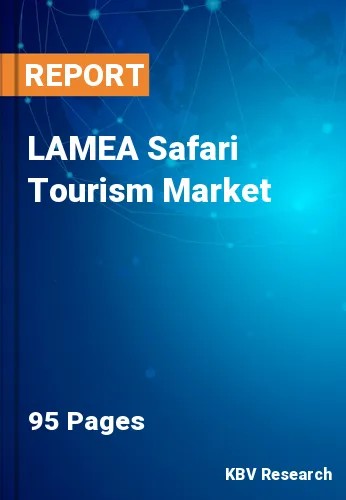The Latin America, Middle East and Africa Safari Tourism Market would witness market growth of 4.8% CAGR during the forecast period (2023-2030).
Tourism organizations and governments promote wildlife and expedition tourism, stimulating market expansion. For instance, the Indian government has enacted measures to stimulate and improve safari tourism. Wildlife conservation, visitor experiences, infrastructure development, and community engagement are the focal points of these initiatives. The Integrated Development of Wildlife Habitats (IDWH) program was implemented by the Ministry of Environment, Forests, and Climate Change (MoEFCC) to assist in conserving and managing wildlife and their habitats. Capacity building, infrastructure improvement, and protection measure enhancement are the focal points of the initiative to promote sustainable wildlife tourism.
The advent of technology has transformed the safari experience. High-quality camera equipment, drones, and virtual reality applications allow tourists to capture and share their wildlife encounters, fostering a sense of connection with nature that extends beyond the duration of the actual journey. As incomes rise and the middle class expands, more individuals have the financial means and leisure time to indulge in unique travel experiences. This tourism, once considered a luxury for the elite, is now accessible to a broader demographic. Modern travelers increasingly seek authentic and immersive experiences. This tourism provides an opportunity to connect with nature and local cultures, offering a break from the conventional tourist trail.
Nations like Kenya, Tanzania, South Africa, Botswana, and Namibia are renowned for traditional African safaris. The "Big Five" (lion, elephant, buffalo, leopard, and rhinoceros) and other iconic African wildlife draw tourists to the natural beauty of savannahs, grasslands, and national parks. Many African countries actively engage in conservation efforts, and this tourism is crucial in funding these initiatives. Additionally, Countries like the United Arab Emirates (UAE), Oman, and Jordan offer desert safaris. Desert safaris often include dune bashing, camel rides, and cultural experiences in Bedouin-style camps. These aspects will boost market growth in the coming years.
The South Africa market dominated the LAMEA Safari Tourism Market by Country in 2022, and would continue to be a dominant market till 2030; thereby, achieving a market value of $8,097.9 million by 2030. The Rest of LAMEA market is showcasing a CAGR of 5.2% during (2023 - 2030). Additionally, The Brazil market would register a CAGR of 1.9% during (2023 - 2030).
Based on Tourism Type, the market is segmented into Adventure Safari, Private Safari, and Others. Based on Group, the market is segmented into Couples, Friends, Families, and Solos. Based on Booking Mode, the market is segmented into Direct Booking, Agents & Affiliates Account, and Marketplace Booking. Based on countries, the market is segmented into Brazil, Argentina, UAE, Saudi Arabia, South Africa, Kenya, and Rest of LAMEA.
Free Valuable Insights: The Worldwide Safari Tourism Market is Projected to reach USD 49.3 Billion by 2030, at a CAGR of 5.4%
The market research report covers the analysis of key stake holders of the market. Key companies profiled in the report include Wilderness Holdings Limited (African Wildlife Holdings Partnership), Thomas Cook (India) Limited (Fairfax Financial Holdings Limited), Singita Group, Scott Dunn, Rothschild Safaris, Micato Safaris, TUI AG, Abercrombie & Kent USA, LLC, Butterfield & Robinson, Inc. and Backroads
By Tourism Type
By Group
By Booking Mode
By Country
Our team of dedicated experts can provide you with attractive expansion opportunities for your business.

